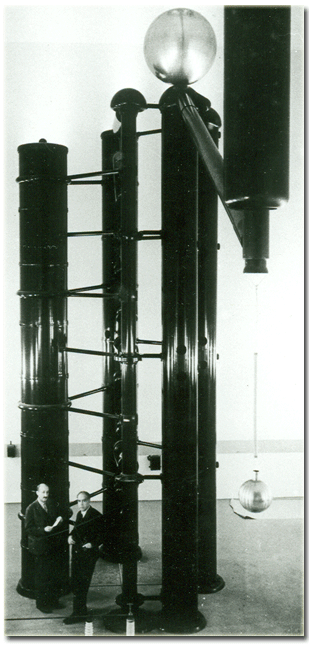Nuclear physics and biology
In the first half of the 1930s interest in theoretical physics gradually turned from the outer part of the atom to its centre, the nucleus.
 This required large-scale apparatus vastly different from the spectroscopical equipment that had so far dominated experimental research at the institute. It testifies to Bohr's conception of the unity of theory of experiment that he was one of the first to seek a full-scale transition to nuclear physics for an institute of theoretical physics.
This required large-scale apparatus vastly different from the spectroscopical equipment that had so far dominated experimental research at the institute. It testifies to Bohr's conception of the unity of theory of experiment that he was one of the first to seek a full-scale transition to nuclear physics for an institute of theoretical physics.
In the 1930s the Rockefeller Foundation instigated a programme for support of natural science concentrating on ‘experimental biology', whereupon Bohr, together with George Hevesy, a Hungarian physical chemist and the physiologist and Nobel Prize laureate (1921) August Krogh, astutely formulated a biological research project employing the same kind of experimental apparatus, notably a cyclotron, needed for nuclear research. From the latter half of 1930s Bohr and his physicist collaborators conducted nuclear research hand in hand with Hevesy's biological investigations.
Hevesy's work was based on his invention of the radioactive tracer method in the early 1910s, which had become applicable to biology after it had become possible in the early 1930s to produce radioactive elements artificially. At the height of its activity just before the war the institute even held small animals to further Hevesy's research.
Yet, the main application of the new equipment was for physics. In early 1939 the institute was the first to verify nuclear fission experimentally.
Finn Aaserud, historian of science, director of the Niels Bohr Archive
